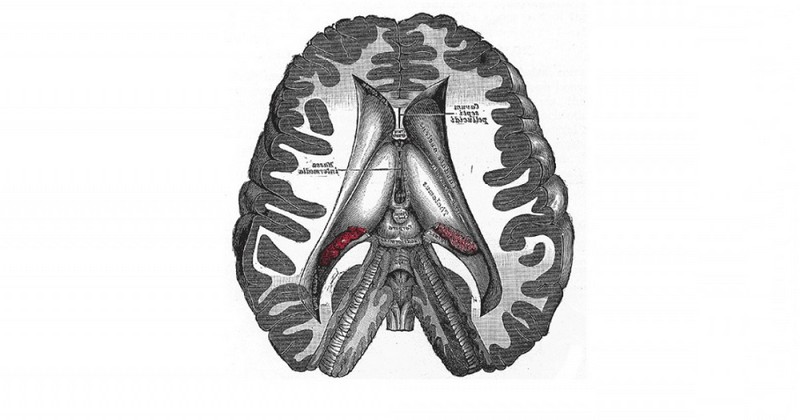Diencephalon: structure and functions of this brain region

This structure of the brain includes the thalamus and hypothalamus, thanks to which we feel.
At the beginning of its development, the central nervous system is composed of three sections: the forebrain, midbrain and hindbrain. Later these initial structures will give rise to the different parts of the adult brain, including the diencephalon.
In this article we will describe the structure and functions of the diencephalon, which encompasses such important regions as the diencephalon and the hindbrain.The diencephalon, which encompasses such important regions as the thalamus and the hypothalamus and allows the correct functioning of multiple biological processes, such as the secretion of hormones and the regulation of the autonomic system.
What is the diencephalon?
The diencephalon is a part of the brain that is located in its medial region.. This name refers to the part of the neural tube that gives rise to various brain structures as embryonic development progresses.
Specifically, once differentiated, the main parts of the diencephalon are the following the thalamus, hypothalamus, epithalamus, subthalamus and retina.. Likewise, the pituitary gland or hypophysis is attached to the hypothalamus, and the optic nerve also connects with the diencephalon.
The cavity formed by these structures is the third ventriclewhich cushions the effects of trauma that could damage them. The posterior cerebral artery and the polygon of Willis provide Blood supply to the diencephalon.
Parts of the brain and the encephalon
The encephalon is the part of the central nervous system located in the cranial cavity, as opposed to the spinal cord. This organ is composed of the cerebrum, cerebellum and brainstem..
The diencephalon develops from the forebrain, one of the three parts of the brain at the beginning of embryonic development of the nervous system. The other two initial sections are the midbrain, which will unite the different parts of the brain, and the hindbrain, which will give rise to the cerebellum, the medulla oblongata and the pons.
As the fetus grows the prosencephalon divides into the diencephalon and the telencephalon.From the latter the cerebral hemispheres, the basal ganglia and the limbic system, including the amygdala, will develop. The sections of the diencephalon are described in the following section.
Structure and functions of the diencephalon
The brain region known as the diencephalon is composed of several structures. These are connected to each other and to the rest of the nervous system, both cortically and subcortically.
Its relationship with the endocrine system, made up of glands that secrete hormones into the blood, is also very relevant.
1. Thalamus
The thalamus functions as a kind of relay nucleus relay nucleus for the connections between the cerebral cortex and subcortical structures.. It is essential for the reception of sensory afferents (with the exception of olfactory afferents, which go directly to the cortex) and their transmission to the cerebral lobes.
This structure also plays a role in the regulation of consciousness and the sleep-wake cycle, and influences motor function through efferents projecting from the thalamus to the basal ganglia and cerebellum.
2. Hypothalamus
The hypothalamus is located below the thalamus. The main functions of this structure include connecting the nervous and endocrine systems and controlling the secretion of hormones by the pituitary by the pituitary and other glands.
The hypothalamus directly produces vasopressin and oxytocin, but also stimulates the endocrine glands to secrete other hormones. It is also key to the regulation of the body's homeostasis as it is involved in thirst, hunger, temperature, circadian rhythms, stress and other bodily processes.
3. Pituitary gland or pituitary gland
The pituitary gland is an endocrine gland attached to the hypothalamus.. It is very important for growth, regulation of the kidneys, sexual function and reproduction, in addition to other aspects.
It consists of two lobes: the anterior pituitary (adenohypophysis) and the posterior pituitary (neurohypophysis). While the neurohypophysis secretes oxytocin and vasopressin, synthesized by the hypothalamus, the adenohypophysis produces and releases corticotropin, growth hormone, prolactin, luteinizing hormone and follicle-stimulating hormone, among others.
4. Epithalamus
This brain structure is mainly composed of the pineal gland, fundamental in circadian cycles.The epithalamus, fundamental in circadian and seasonal cycles, and the habenula, involved in the function of the neurotransmitters dopamine, norepinephrine and serotonin. The epithalamus connects the limbic system with other brain regions.
5. Subthalamus
The subthalamus is attached to the globus pallidus, one of the main nuclei of the basal ganglia. Because of this it plays a regulatory role in extrapyramidal and involuntary movements.
6. Retina and optic nerve
The retina develops from the diencephalon, so it is considered a part of the central nervous system. is considered a part of the central nervous system. The optic nerve allows the transmission of information from the eye to the brain through its junction with the diencephalon.
7. Third ventricle
The cerebral ventricles allow the cerebrospinal fluid to circulate.The third ventricle is located in the third ventricle, which has functions similar to those of blood in the brain and spinal cord, as well as protecting the neural tissue from shocks and injuries. The third ventricle is located in the middle part of the ventricular system, below the epithalamus.
(Updated at Apr 13 / 2024)